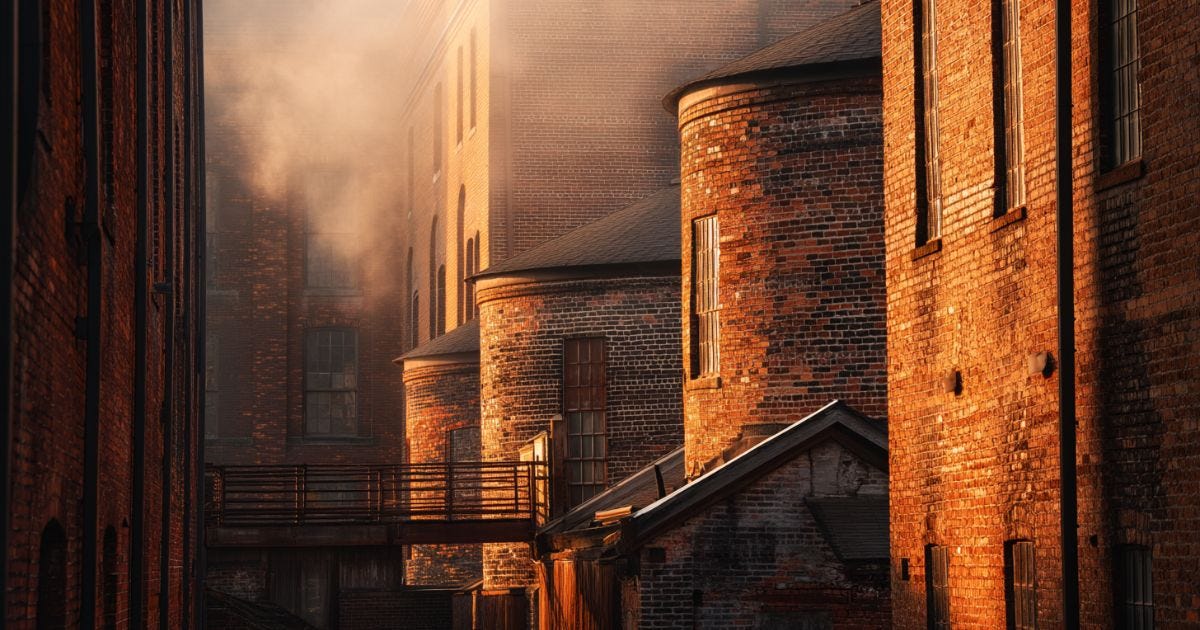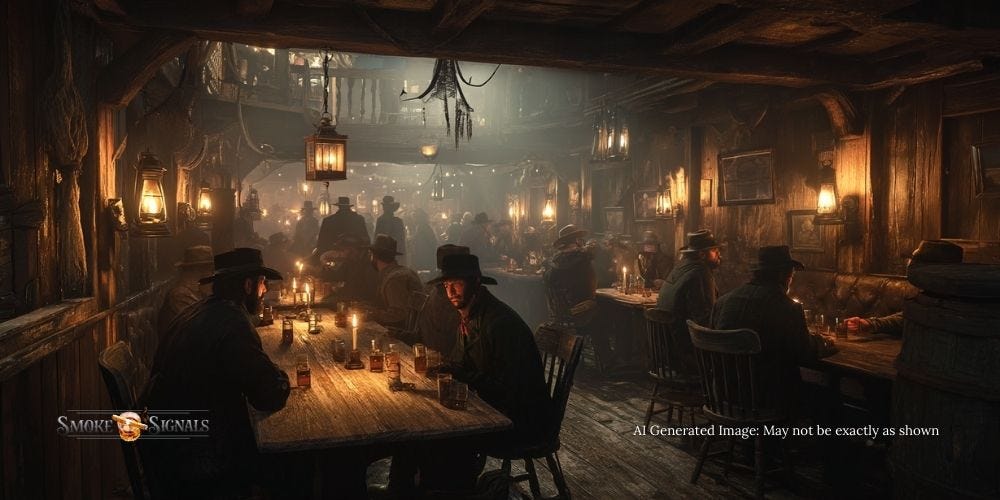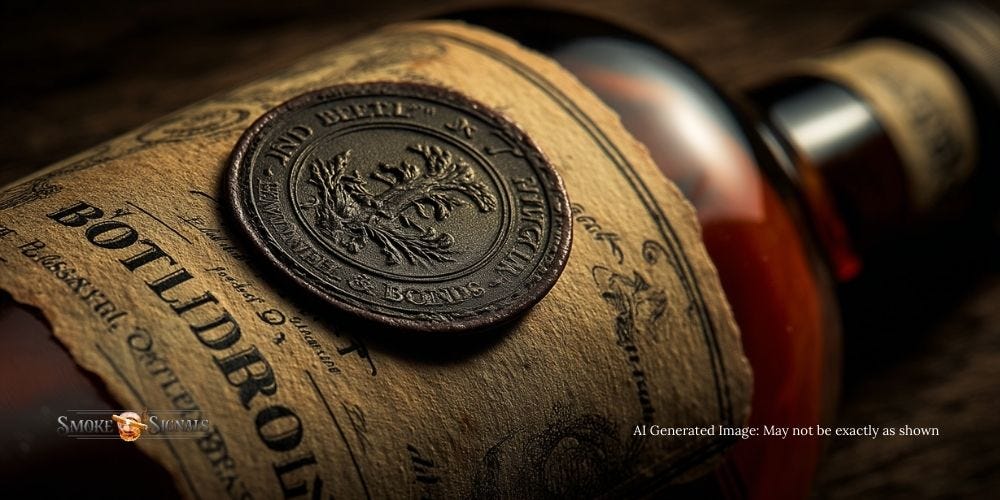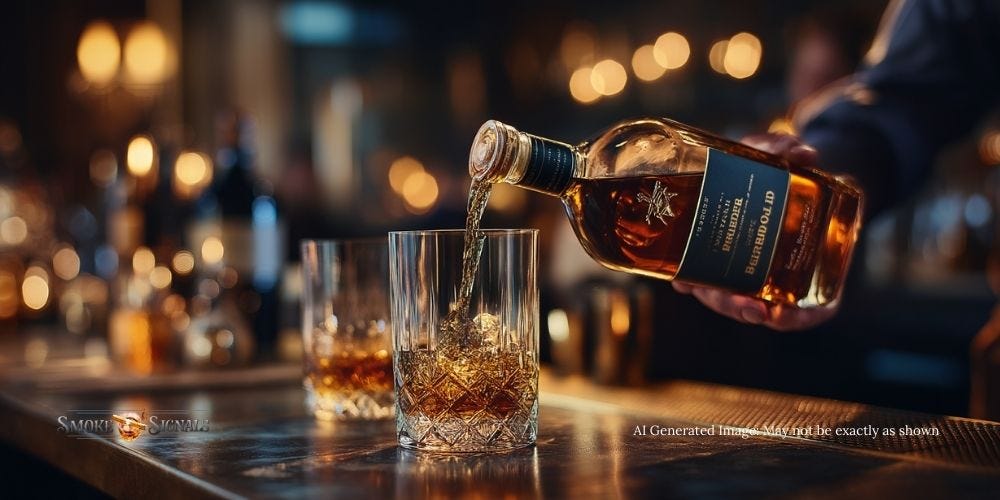From Fake Whiskey to Bottled-in-Bond
Kerosene, iodine, even tobacco spit — 1800s whiskey was dangerous. See how Col. Taylor cleaned it up forever.
Listen While You Read
Hit play and let the audio set the mood while you dive into the story of a man who changed bourbon forever.
Col. E.H. Taylor — The Lawmaker Behind Bottled-in-Bond
In the smoky haze of an 1800s saloon, ordering a glass of whiskey was a gamble. What you got in the glass might not have been whiskey at all — it could be laced with iodine, kerosene, prune juice, or even tobacco spit. In that world of dangerous concoctions, one Kentucky distiller decided enough was enough. Colonel Edmund Haynes Taylor Jr., nephew of a U.S. President, politician, and larger-than-life showman, set out to clean up America’s whiskey.
His crusade gave birth to the Bottled-in-Bond Act of 1897 — a landmark law that guaranteed real whiskey in the bottle, making it one of the very first consumer protection laws in U.S. history, predating even the creation of the FDA. More than 125 years later, his name still lives on every bottle of E.H. Taylor bourbon, and his law still protects drinkers today.
Key Takeaways 🍂🥃
Col. E.H. Taylor Jr. wasn’t just a distiller — he was also a politician and showman.
The Bottled-in-Bond Act of 1897 was one of America’s earliest consumer protection laws, ensuring whiskey purity long before food or medicine had similar standards.
Taylor built the iconic Old Taylor “castle” distillery, turning bourbon into an experience as much as a drink.
His fierce battle against “rectifiers” — who sold fake whiskey spiked with dangerous additives — changed the industry forever.
Every Bottled-in-Bond label today is a direct legacy of Taylor’s fight for honesty in a bottle.
The Man Behind the Name
Born in 1830 in Kentucky, Edmund Haynes Taylor Jr. grew up with a sense of prestige. He was the great-nephew of President Zachary Taylor, which gave him a taste for politics long before he ever tasted bourbon. His early career started in banking, but spreadsheets and ledgers couldn’t hold him. He was drawn instead to something more spirited — quite literally. By the 1860s, Taylor was knee-deep in the whiskey trade.
He wasn’t just another distiller; he was a perfectionist with a flair for the dramatic. When he built his Old Taylor Distillery, he didn’t settle for a warehouse and a smokestack. He built a limestone castle, complete with gardens and even a spring-fed sunken pool — more Versailles than Kentucky holler. Guests didn’t just tour a distillery; they attended an event. Carriages rolled in, picnics were spread across the lawn, and whiskey flowed like a royal feast. Taylor was as much a P.T. Barnum as he was a bourbon baron, and he loved every bit of the spectacle.
Whiskey’s Wild West
To understand Taylor’s crusade, you have to picture whiskey in the 1800s — and it wasn’t pretty. Honest distillers would make their spirit the traditional way: grain, water, yeast, time, and oak. But they were up against a shady army of “rectifiers”, men who took industrial alcohol and “improved” it with a cocktail of horrifying additives. A splash of iodine for colour, a little prune juice for flavor, maybe even kerosene or tobacco spit for kick.
The result wasn’t whiskey — it was roulette in a bottle. One sip might warm your belly, the next might send you to the doctor. Buying whiskey back then was about as safe as buying medicine from a travelling snake-oil salesman.
Taylor despised this fakery. He believed bourbon was Kentucky’s gift to the world, not some back-alley science experiment gone wrong. And he wasn’t shy about saying so. In fact, he railed against the cheats with speeches that were part outrage, part theatre, and entirely effective. For Taylor, whiskey wasn’t just business — it was personal honour. And he was about to take that fight from the saloon straight to the halls of Congress.
The Bottled-in-Bond Act of 1897
By the 1890s, Taylor had sharpened his distiller’s skills and his politician’s elbows. He wasn’t content to make great whiskey — he wanted to protect it, and by extension, protect the people who drank it. His solution? Take the fight to Congress.
The result was the Bottled-in-Bond Act of 1897, a law that changed American whiskey forever. It wasn’t just about bourbon — it was one of the very first federal consumer protection laws in the United States, predating the Pure Food and Drug Act by almost a decade. Imagine that: whiskey got federal quality standards before milk, bread, or medicine.
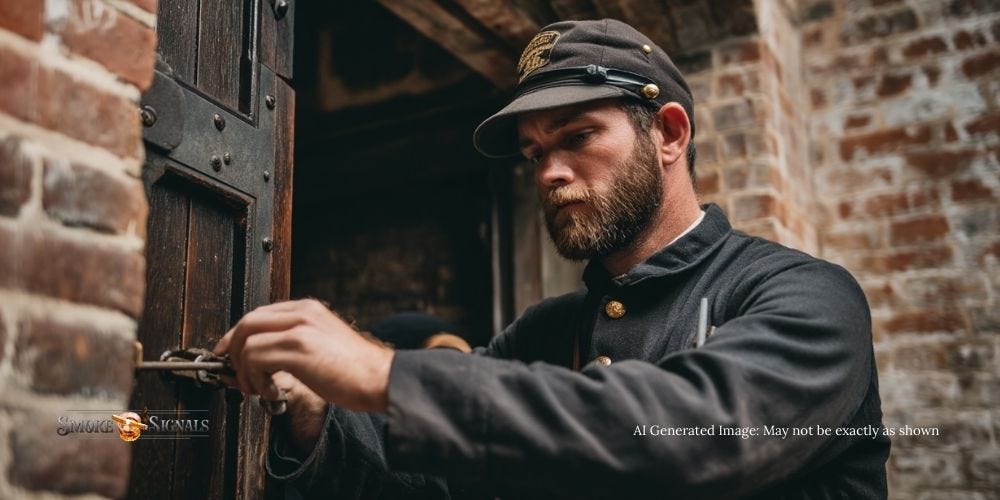
So what did it mean? In plain terms, a Bottled-in-Bond label guaranteed:
Whiskey from a single distiller, in a single season.
Aged at least four years in a federally bonded warehouse.
Bottled at exactly 100 proof.
Supervised by the U.S. government, complete with a special seal on the bottle.
Those bonded warehouses were the stuff of legend—picture rows of brick rickhouses with heavy doors under literal government lock and key. Treasury agents controlled the padlocks, and distillers couldn’t touch a barrel without Uncle Sam’s say-so. Guards weren’t standing there with rifles, but the presence of federal oversight gave these warehouses an almost fortress-like aura. It was whiskey under watch — whiskey that couldn’t be tampered with, watered down, or poisoned.
For drinkers, it was revolutionary. No more guessing games. No more “mystery juice.” When you bought Bottled-in-Bond, you knew you were getting real whiskey. Taylor pitched it not just as regulation, but as a matter of American pride: a spirit worthy of respect, sealed by the U.S. government itself.
Taylor the Politician and Fighter
Of course, Taylor didn’t achieve all this by playing nice. He was, after all, a man who once served as mayor of Frankfort, and he understood that politics was often a contact sport. He lobbied, pressured, and cajoled his way to the Bottled-in-Bond Act’s passage. And when critics stood in his way, he let them have it with both barrels — sometimes literally in speeches, sometimes in writing that pulled no punches.
His favourite targets were the rectifiers. He portrayed them as cheats, villains, and peddlers of poison. And in fairness, they made it easy. It’s hard to defend dumping iodine and tobacco spit into whiskey and calling it “bourbon.”
But make no mistake — Taylor’s crusade wasn’t entirely selfless. By raising the bar, he also kneecapped many of his competitors. Still, history has a way of siding with the winners. Today, he’s remembered not as a ruthless businessman, but as the Father of Modern Bourbon, the man who turned a chaotic industry into a source of national pride.
The Legacy of Bottled-in-Bond
The Bottled-in-Bond Act didn’t just clean up whiskey — it transformed it. For the first time, drinkers could trust what was in their glass. And that trust was enforced not by the distiller’s word, but by the federal government’s seal. Those locked warehouses became a symbol of integrity, and every bottle that left them carried the weight of law.
The impact was massive. Bourbon went from being the risky choice in a saloon to the pride of Kentucky, eventually winning respect across the nation and around the world. Other distillers grumbled at first, but soon they were bottling in bond too — because consumers demanded it.
Fast-forward more than 125 years, and Bottled-in-Bond still stands as a badge of authenticity. Whiskey geeks and bartenders alike know that when they see it, they’re holding history. At Buffalo Trace, bottles of E.H. Taylor Small Batch and Single Barrel proudly bear his name, reminding modern drinkers that one man’s fight for honesty in a bottle still echoes through every pour. In a way, every sip is a toast to Taylor’s stubbornness — and his vision.
The Fun Side of Taylor
Of course, Taylor wasn’t all business and politics. He had a flair for the dramatic that made him larger than life. Take the Old Taylor Distillery, for example. Instead of building a utilitarian warehouse, he built a limestone castle on the banks of Glenns Creek. With its turrets, gardens, and manicured lawns, it looked more like a European estate than a Kentucky distillery.
And he didn’t stop there. He added a sunken spring-fed pool — not for swimming, but as a gleaming display of purity. Guests would arrive by carriage, stroll the gardens, sip whiskey, and picnic on the grounds. It was the 19th-century equivalent of a bourbon theme park. Some came for the whiskey, but many left talking about the spectacle.
Taylor understood that whiskey wasn’t just a drink — it was an experience. He wanted visitors to associate bourbon with elegance, refinement, and a touch of wonder. And in that, he succeeded. To this day, the ruins of the Old Taylor Castle remain one of the most photographed sites in Kentucky bourbon country — proof that Taylor’s ego built something enduring.
Why This Matters Today
Walk into a good whiskey bar today and you’ll see a familiar phrase glowing from the labels: Bottled-in-Bond. More than a century after Taylor pushed his law through Congress, those three words still carry weight. In a world where marketing buzzwords fly fast and loose, Bottled-in-Bond is a guarantee rooted in law, not hype.
For modern drinkers, it means you’re holding a piece of history. Every bonded bottle still follows the same strict standards Taylor fought for in 1897: one distiller, one season, four years minimum, 100 proof, and a warehouse watched by Uncle Sam. In an age of small-batch experiments and flashy branding, BiB stands as bourbon’s most enduring promise — the real deal, straight up.
And that’s why Taylor matters today. He didn’t just save bourbon from snake-oil peddlers — he gave it the foundation to thrive. Every pour of E.H. Taylor Small Batch, every BiB whiskey on the shelf, is a direct line back to his vision.
Conclusion
Picture that saloon again, the smoky haze and the glass of “whiskey” sliding across the bar. Before Taylor, you never knew what you were really drinking. After him, you could trust that what filled your glass was honest, real, and worthy of the name bourbon.
Colonel Edmund Haynes Taylor Jr. wasn’t just a distiller — he was a reformer, a politician, and a showman who built castles and passed laws in equal measure. His crusade against cheats and counterfeits gave America one of its first consumer protection laws and cemented bourbon’s reputation around the world.
So the next time you crack open a Bottled-in-Bond whiskey, remember the man who made it possible. Raise a glass not just to the bourbon inside, but to Taylor himself — the lawmaker who proved that sometimes, the boldest spirit is the one in the bottle.



